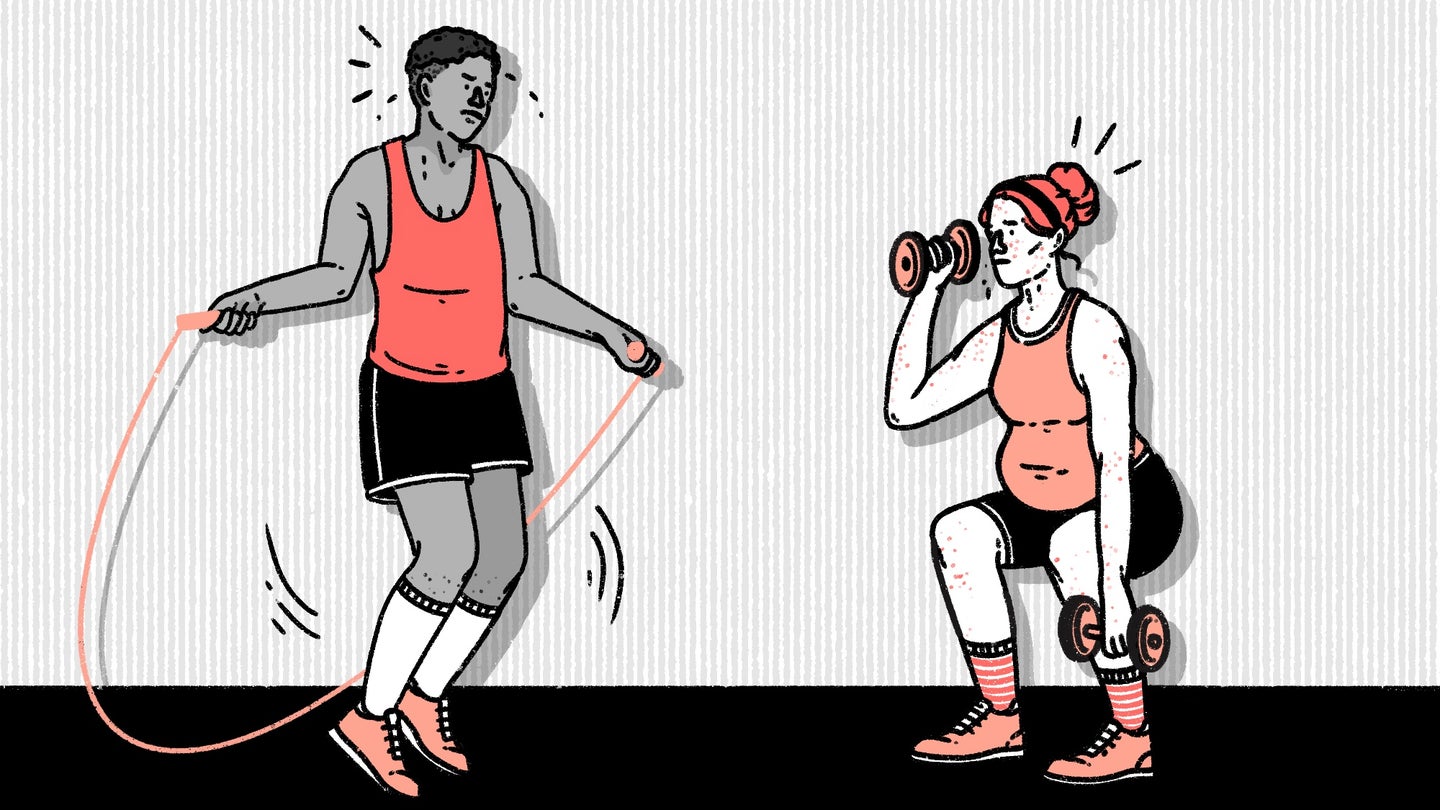MOST PEOPLE have a certain mindset when it comes to working out: They tend to stick to a familiar plan and will push their bodies to the brink to achieve their fitness goals. But a healthy exercise routine has several building blocks—and a surprising number of them depend on what you do outside your regular sweat sessions.
Warm-up
Activities that prepare you for your main fitness practice can serve two primary purposes: reducing injury and improving performance. Warm-ups hit those marks by increasing blood flow, ramping up muscle and core temperatures, and disrupting the temporary connective tissue bonds that can make you feel tight and sore. This leads to performance-enhancing benefits like faster muscle contraction, better reaction time, greater muscle strength, lower muscle resistance, and more oxygen for your cells. Warm-ups should last at least 5 minutes and top out at 15 minutes, depending on the length and difficulty of your routine: They usually include stretching and a slow increase in exertion.
Cardio
Frequent exercise that raises your heart rate to your target zone has been shown to benefit cardiac health (though there is some evidence that consistent physical effort at this level, like during marathon training, could have negative effects). It can decrease the risk of developing and dying from heart conditions. Not only that, but cardio workouts are also associated with lower blood pressure and the suppression of atherogenesis, the buildup of fatty plaque in blood vessels that can lead to coronary artery heart disease.
Strength training
Weightlifting isn’t just for people who want to get ripped: It has more significant benefits, particularly as you age. For one, targeted muscle building can reinforce joints like knees, ankles, and hips. That offers better support for your body, which helps lower the chances of falls and injuries. Contrary to popular belief, strength training also promotes greater mobility and flexibility; plus it boosts brain health and cognitive abilities like processing speed, memory, and executive functioning.
Hydration
You have to stay hydrated before, during, and after your workout. Exercise depletes the body’s fluids, particularly as you sweat. Dehydration degrades your performance and can also impair certain cognitive functions, including short-term memory and attention. Hydrating sometimes alleviates fatigue and increases reaction time. Overall, drinking water when you feel a need, rather than on a fixed schedule, can improve performance measures like duration and speed. It’s possible to drink too much water (a potentially fatal situation known as hyponatremia), so take small sips rather than chugging a bottle all at once.
Cooldown
Just as you don’t want to dive straight into your routine, you don’t want to end it abruptly. Build in some time to slow your roll and bookend your warm-up. An active cooldown in which you do something similar to your workout but at a lower intensity, like a light jog after a long run, can solidify the results from exercising and prep you for your next routine. Bonuses include accelerated recovery of lactate in blood, partial prevention of immune system depression, and faster recovery of the cardiovascular and respiratory systems.
Rest days
Taking days off between workouts is a crucial part of any fitness routine. Studies indicate that rest is necessary for the body to recover: When exercise and exertion sap your energy stores and fluids, relaxation gives you time to replenish them. You need at least 24 hours to fully replace the carbohydrates in your muscles, which are important for maintaining an adequate level of glycogen and stabilizing blood sugar. Rest days help prevent overtraining syndrome too. The illness mostly comes up in competitive runners and elite athletes, with symptoms like fatigue, sleep loss, and depression.
Read more PopSci+ stories.
The post The 6 essential parts of an effective workout appeared first on Popular Science.
Articles may contain affiliate links which enable us to share in the revenue of any purchases made.
from | Popular Science https://ift.tt/fsk3K9u






0 Comments